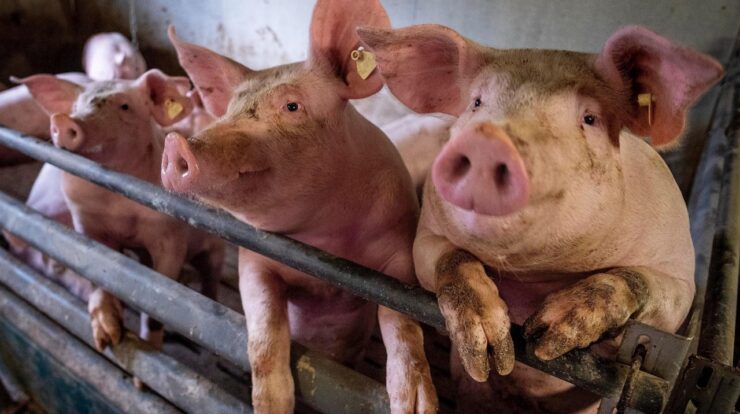
Swine flu, a highly contagious respiratory illness, has captivated global attention due to its potential for widespread outbreaks. This comprehensive exploration delves into the intricacies of swine flu, examining its origins, symptoms, transmission, and preventive measures.
From its humble beginnings to its recent resurgence, swine flu has left an undeniable mark on human health and society. This narrative unravels the complexities of the virus, shedding light on its impact and the ongoing efforts to combat its spread.
Swine Flu: Definition, Symptoms, and Transmission

Swine flu, also known as swine influenza, is a respiratory disease caused by influenza viruses that typically infect pigs. It can also be transmitted to humans, resulting in a range of symptoms and potential complications.Swine flu is classified within the Orthomyxoviridae family of viruses and belongs to the Influenza A virus type.
It is closely related to human influenza viruses and can be transmitted through contact with infected pigs or contaminated objects. The virus undergoes genetic mutations over time, leading to the emergence of new strains that can cause outbreaks in both pigs and humans.
Symptoms and Transmission of Swine Flu

Swine flu typically causes symptoms similar to those of human influenza, including:
- Fever
- Cough
- Sore throat
- Runny nose
- Body aches
- Headache
- Fatigue
The virus is primarily transmitted through contact with respiratory droplets produced by infected pigs or humans. These droplets can be inhaled or come into contact with the eyes, nose, or mouth. Contact with contaminated surfaces or objects can also lead to infection.
Diagnosis and Treatment of Swine Flu
Diagnosis of swine flu involves a combination of clinical examination and laboratory testing. Symptoms alone may not be sufficient to confirm the diagnosis, as they can overlap with other respiratory illnesses.Laboratory tests, such as real-time reverse transcription polymerase chain reaction (RT-PCR), can detect the presence of the virus in respiratory samples.
This test is highly sensitive and specific, providing a definitive diagnosis.Treatment for swine flu typically includes antiviral medications, such as oseltamivir (Tamiflu) and zanamivir (Relenza). These medications are most effective when started within the first 48 hours of symptom onset.
They work by inhibiting the replication of the virus, reducing the severity and duration of symptoms.
Prevention and Control of Swine Flu

Prevention of swine flu involves a combination of measures, including:
Vaccination
Annual influenza vaccines are available to protect against seasonal strains of swine flu.
Hygiene practices
Frequent handwashing, covering coughs and sneezes, and avoiding contact with infected individuals can help prevent the spread of the virus.
Limiting contact with pigs
People who work with pigs or visit pig farms should take precautions to avoid direct contact with the animals and wear protective gear when necessary.Public health agencies play a crucial role in controlling swine flu outbreaks. They monitor the virus, provide guidance to healthcare professionals, and implement control measures to contain the spread of the disease.
Conclusive Thoughts: Swine Flu

In conclusion, swine flu remains a formidable force in global health, necessitating continued vigilance and collaboration among healthcare professionals, researchers, and policymakers. By understanding its nature, transmission, and prevention, we can mitigate its impact and safeguard public health.





